
In the current competitive e-commerce environment, choosing the right Print on Demand platform is crucial.
Although Printify is popular for its rich product selection and convenient operation, many sellers are still looking for other solutions that better meet their needs.
This article will introduce you to the 17 best Printify alternatives to help you find a Print on Demand platform that is more suitable for your business development, thereby improving efficiency and profits.
Why Some Sellers Look Beyond Printify
Printify makes it easy to start a print-on-demand business, offering a wide range of products and connecting you with printing partners around the world. It handles production and shipping, so you don't have to worry about inventory.
Even so, it's not always the best fit for every seller. Import duties can drive up costs in some regions, and some newer products aren't competitively priced. Print quality and shipping times can vary depending on the printer, which can affect customer satisfaction.
For these reasons, many sellers explore apps like Printify that provide lower costs, faster delivery, or specialized products better suited to their audience.
Trying different platforms can also reveal features or integrations that make managing a print-on-demand business easier.
17 Best Printify Alternatives for Print on Demand Business
PrintKK
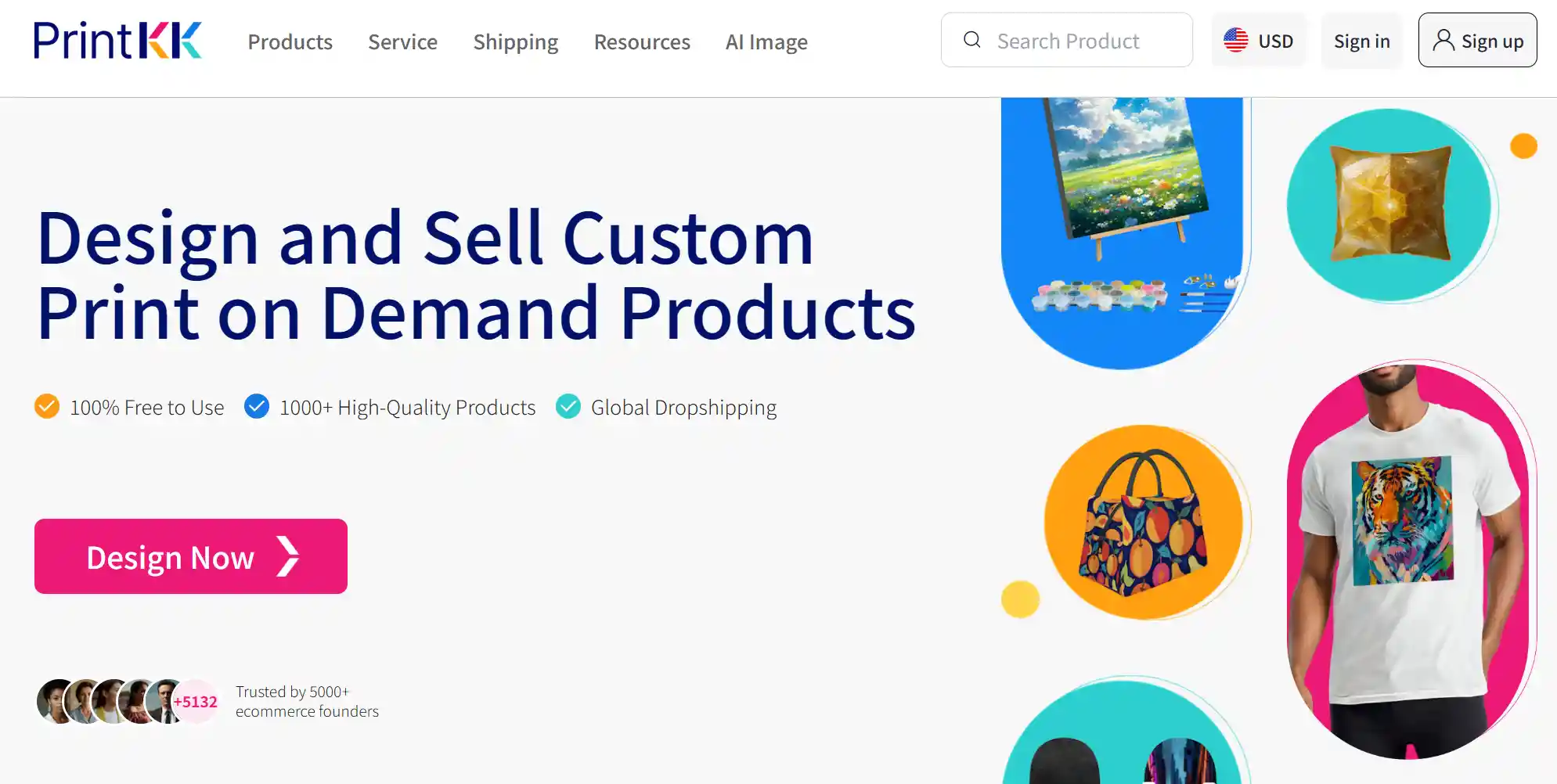
PrintKK is a straightforward print-on-demand platform that focuses on apparel and accessories. It makes creating custom products simple, with options for shipping worldwide.
If you want an easy way to offer quality printed items, PrintKK might be a good fit.
Feature:
- Variety of apparel and accessory options
- Direct-to-garment printing technology
- International shipping available
- High-quality AI image tools
Pros:
- Simple and clear interface
- Reliable print quality
- Reasonably fast delivery in some regions
Cons:
- Smaller product catalog than some others
- Limited integration with popular online stores
- Customer service response times can be slow
Price:
No monthly fees; you only pay for each product when you sell it.
Sellfy
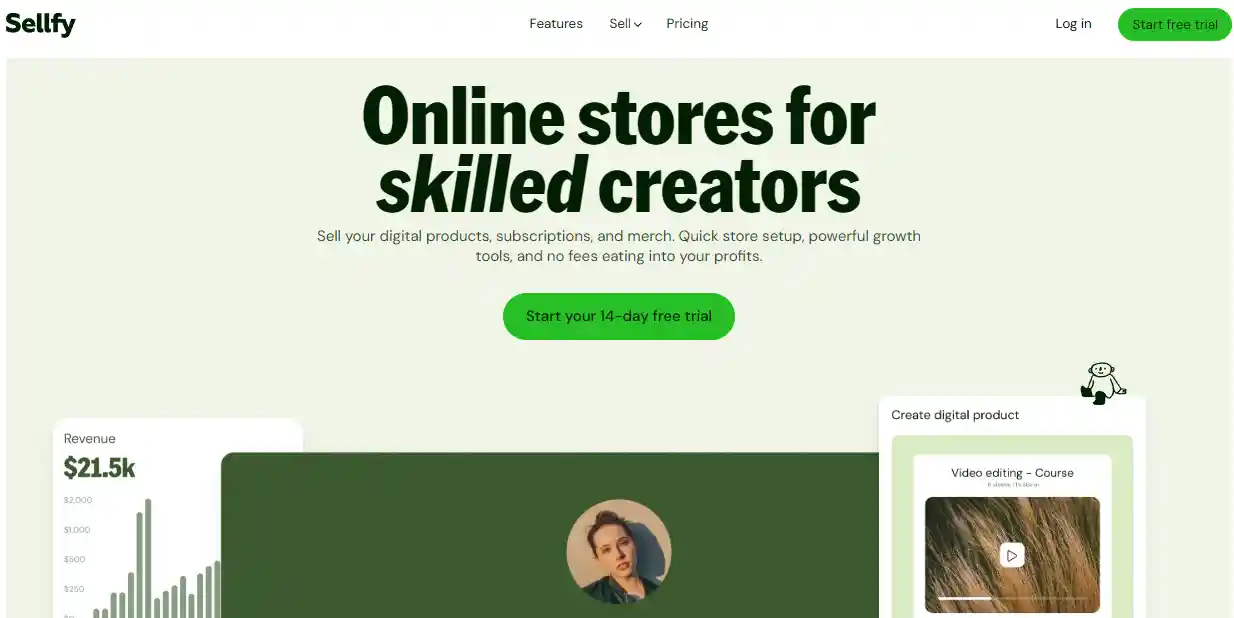
Sellfy is a versatile platform allowing you to sell digital downloads alongside print on demand items. It includes built-in marketing features, so you can promote your products and grow your audience from one place.
Feature:
- Supports both digital and print on demand sales
- Integrated marketing tools such as email campaigns
- User-friendly storefront creation
Pros:
- Combines POD with digital goods
- Helpful sales and marketing tools included
- Simple setup process
Cons:
- Print on demand product selection is limited
- Requires a paid monthly plan
Price:
Sellfy offers tiered monthly plans. The cheapest package is $22. There are no extra fees per sale beyond your subscription.
Gelato

Gelato links you to printers located close to your customers around the world. This helps reduce shipping times and costs.
It's ideal if you care about sustainability and want a broad product range.
As one of the reliable alternatives to Printify, Gelato helps sellers scale efficiently with local production partners.
Feature:
- Production in over 30 countries
- Wide selection including home goods and apparel
- Emphasis on eco-friendly printing methods
Pros:
- Quicker deliveries due to local printing
- Large variety of products
- Environmentally conscious approach
Cons:
- Products tend to cost more
- Branding choices are somewhat limited
- Quality can vary between print partners
Price:
In addition to the free plan, there is also the Gelato+ plan, which includes product discounts as well as premium models.
Gooten
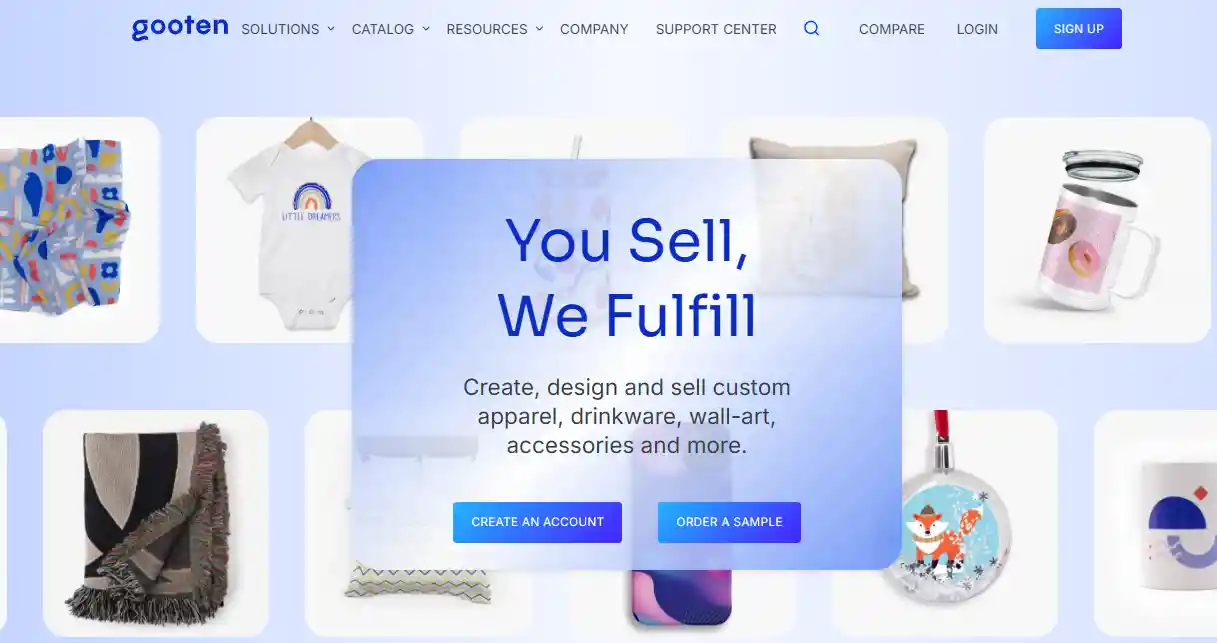
Gooten offers a broad catalog and a global network of fulfillment centers. It's built to support growing businesses and multiple sales channels.
Feature:
- Over 150 customizable products
- API for custom setups
- Worldwide production and shipping
Pros:
- Large product variety
- Affordable pricing
- Scales well with order volume
Cons:
- Interface is not very intuitive
- Customer support can be slow
- Limited options for branding
Price:
No monthly fees; product and shipping costs apply per order.
Zazzle
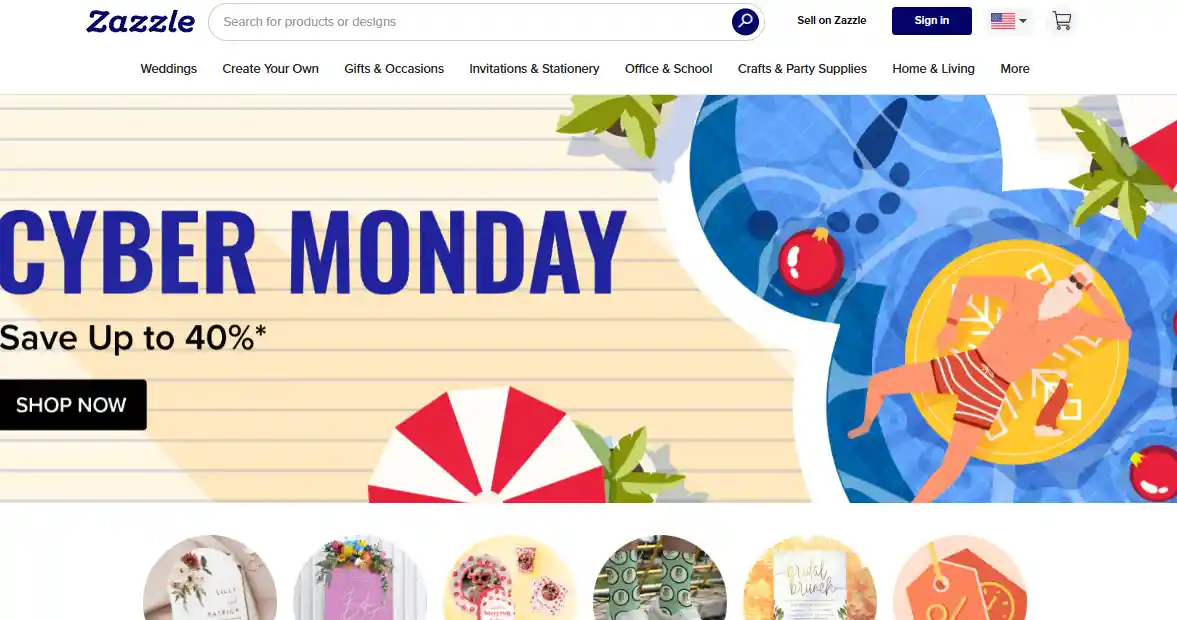
Zazzle combines a marketplace with print-on-demand services. You can sell through their platform or integrate with your own site. It's known for personalized gifts and art-related products.
Feature:
- Built-in marketplace audience
- Unique, customizable product range
- Design tools for buyers
Pros:
- Access to an existing customer base
- Wide range of creative items
- No upfront costs to start
Cons:
- Lower margins for sellers
- Less control over branding
- Fees apply when selling through marketplace
Price:
Free to join; you earn royalties set by you on each sale.
Redbubble
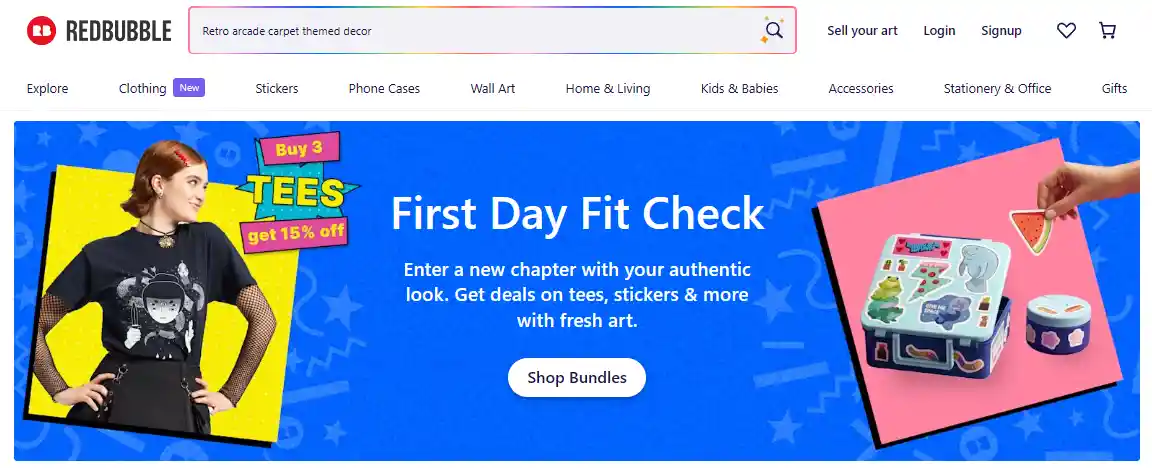
Redbubble is a marketplace and print-on-demand provider popular among artists who want to sell your own t shirt designs without handling inventory or shipping. It's an option for creators looking to focus on design while leveraging a built-in audience.
Feature:
- Emphasis on art and custom designs
- Easy process for uploading and selling
- Worldwide production and shipping
Pros:
- Large community of creatives
- Simple setup for new sellers
- No upfront investment required
Cons:
- Profit margins tend to be low
- Customization of products is limited
- Little control over branding and packaging
Price:
Joining is free; you make money through royalties based on sales, with Redbubble handling printing and delivery.
Teespring (Spring)

Teespring, now rebranded as Spring, is a print on demand service designed for creators who want to sell custom products without worrying about production or shipping. It streamlines the selling process by handling printing, shipping, and customer support, so you can concentrate on promoting your designs.
Feature:
- Easy-to-use product creation tools
- Direct social media integrations
- Automated order management
Pros:
- No upfront investment needed
- Built-in marketplace exposure
- Large product variety
Cons:
- Limited ability to set prices freely
- Profit margins may be smaller
Price:
You don't pay monthly fees. Costs come from production, and you earn the markup you add on top. But the platform will absorb a certain amount of commission from each of your orders.
Society6
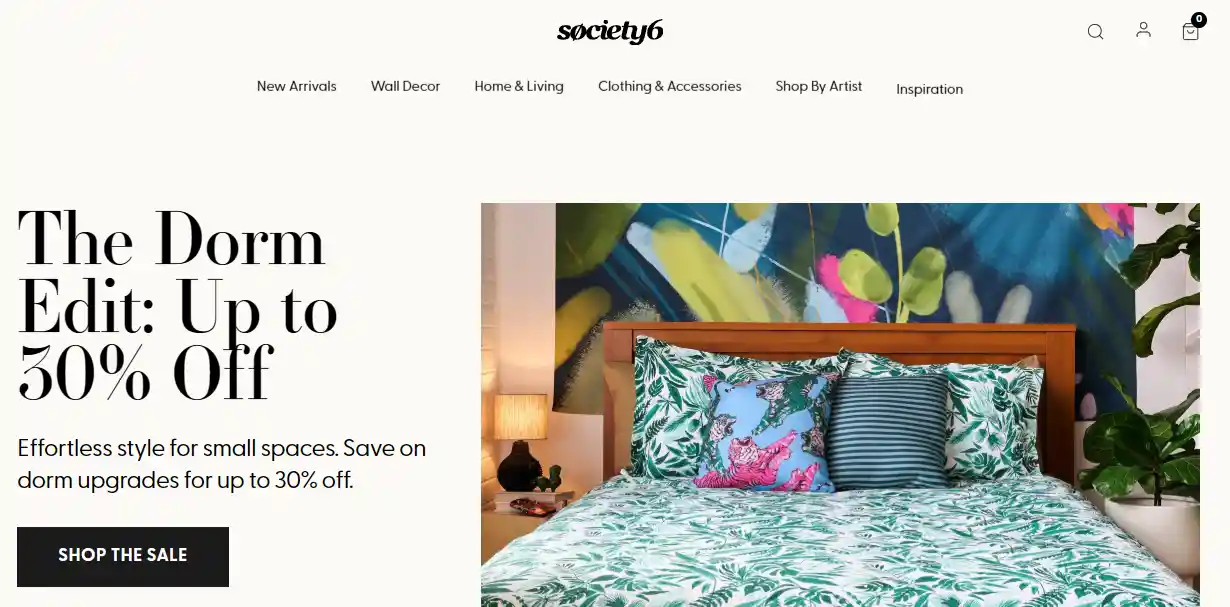
Society6 is a platform aimed mainly at artists who want to sell their designs on a variety of products. Once you upload your artwork, Society6 takes care of printing, packaging, and shipping. It offers a wide selection including art prints, clothing, and home goods.
Feature:
- Focus on art and design products
- Handles all order fulfillment
- Offers a diverse product lineup
Pros:
- Access to an established customer base
- No need to manage inventory or shipping
- Simple process for listing work
Cons:
- You cannot control product pricing
- Lower earnings compared to other platforms
Price:
Joining and uploading is free.
CustomCat
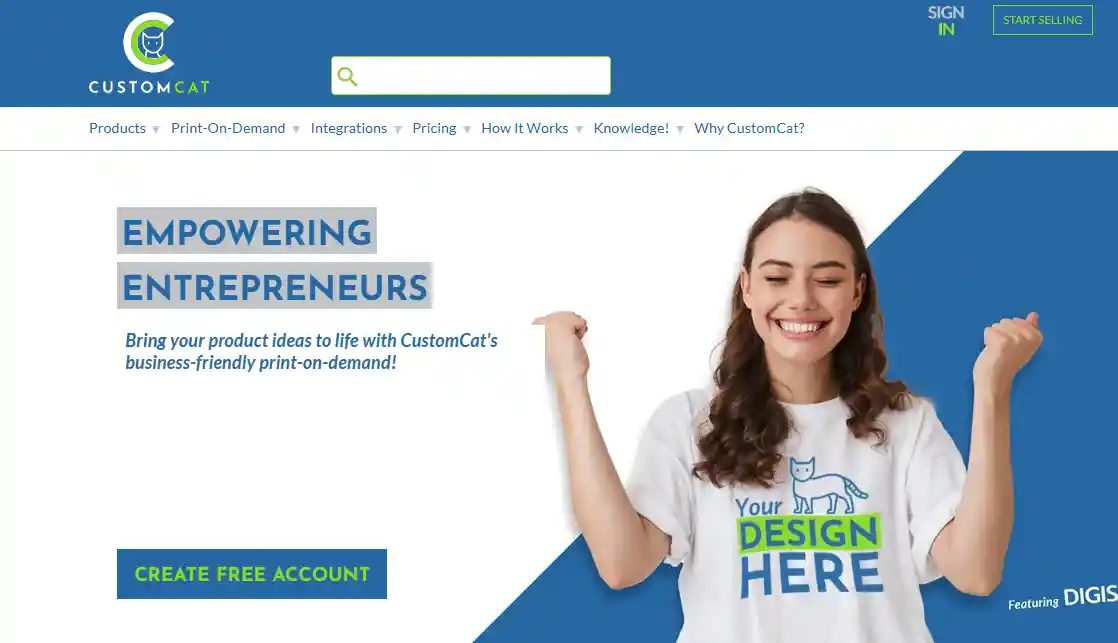
CustomCat stands out for offering a broad range of products, with a focus on apparel. Its fast print and shipping services allow you to keep customers happy. Integration with popular online stores helps automate your sales workflow.
Feature:
- Large product catalog with 350+ items
- Syncs with Shopify, WooCommerce, and more
- Quick order turnaround
Pros:
- Wide product variety
- Competitive pricing structure
- Reliable fulfillment
Cons:
- Can be a bit tricky for beginners to navigate
- Limited options for branding customization
Price:
No monthly fee is required. You pay for each product and shipping after an order is placed. But they also offer paid plans.
Spreadshirt
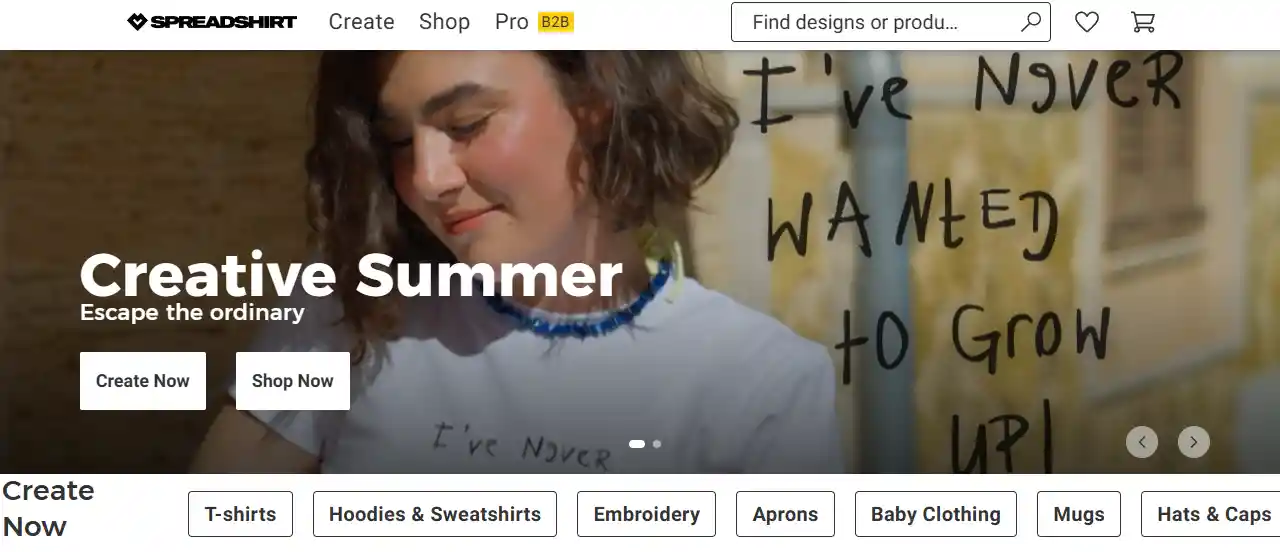
Spreadshirt offers both a marketplace for your designs and the option to run your own store. It provides simple design tools and serves customers internationally, which helps expand your reach.
Feature:
- Marketplace plus personal shop capabilities
- Easy-to-use design editor
- Worldwide shipping options
Pros:
- Broad range of customizable products
- Additional sales from marketplace exposure
- Straightforward design process
Cons:
- Profit margins may not be very high
- Limited access to customer data
Price:
There are no subscription costs. You decide the retail price, and your profit is the difference between that and the production cost.
TeeLaunch

TeeLaunch offers a focused selection of apparel and accessories with seamless integration to e-commerce platforms like Shopify and Etsy. Its fulfillment process is automated, helping you scale efficiently without much effort.
Feature:
- Integrates with major online stores
- Good variety of clothing and accessories
- Automated order fulfillment
Pros:
- Affordable pricing on products
- Easy setup and use
- Reliable shipping services
Cons:
- Product range is narrower than some competitors
- Quality control can sometimes be inconsistent
Price:
No monthly subscription fees. You pay production and shipping costs as orders come in.
Printful
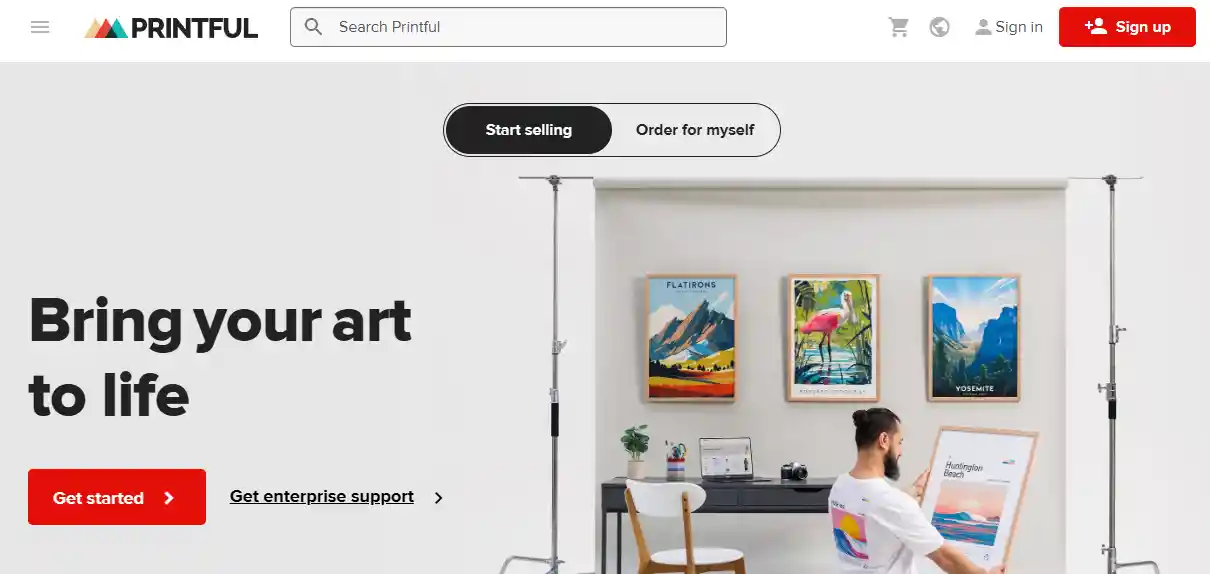
Printful is a well-known platform offering a large product range and many store integrations. It lets you design and sell everything from clothing to home decor with added branding options.
Feature:
- Extensive product lineup
- Works with many eCommerce platforms
- Custom branding like labels and packaging
Pros:
- High-quality printing and materials
- User-friendly design tools
- Broad platform compatibility
Cons:
- Base prices are on the higher side
- Shipping speed depends on location
- Some advanced features may require payment
Price:
In addition to the free plan, there is also Printful membership, which provides additional benefits such as discounted prices on products.
SPOD
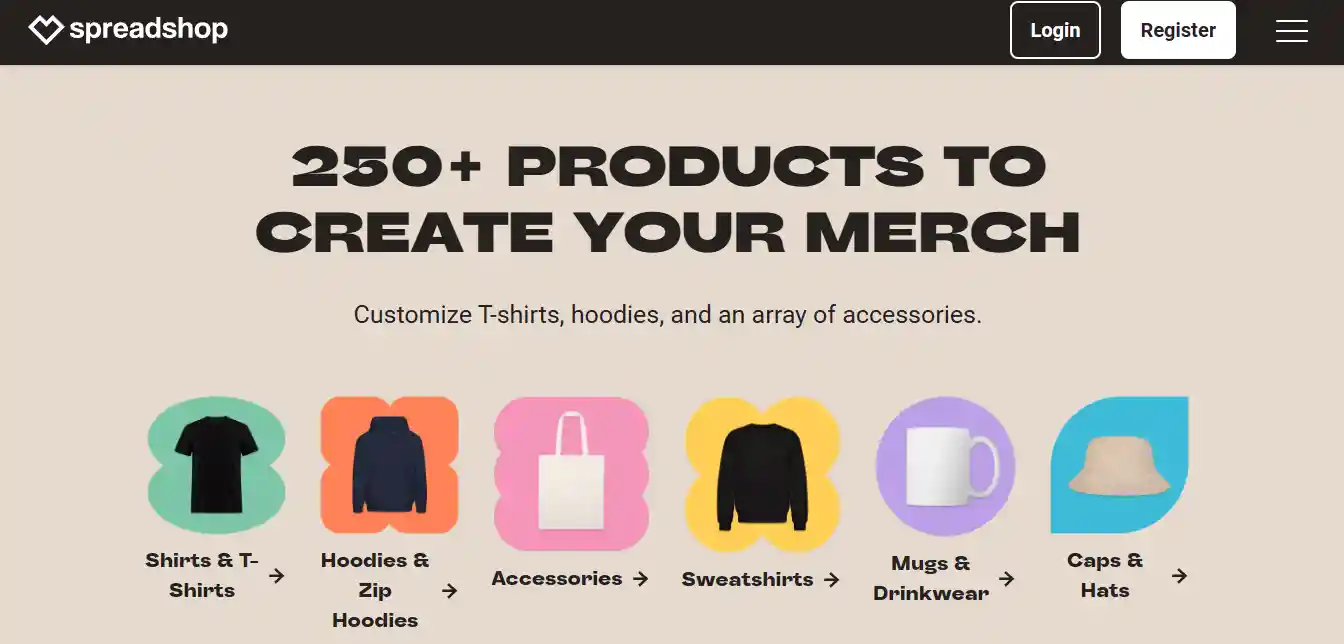
SPOD (Spreadshirt Print-On-Demand) is a fast and efficient print on demand platform known for its quick production times. You can expect most orders to ship within 48 hours. Its speed makes it a good choice if you want to keep customers satisfied with fast delivery.
Feature:
- 48-hour production turnaround
- Over 100 customizable products
- Integration with Shopify and WooCommerce
Pros:
- Very fast fulfillment
- Easy-to-use design tools
- No minimum order requirements
Cons:
- Smaller product variety compared to others
- Limited branding options
Price:
No monthly fees. You only pay for products and shipping when customers order.
Print Aura

Print Aura is a print on demand service focused on seamless integration with your online store. It handles printing and shipping, letting you focus on growing your business rather than order management.
Feature:
- Integration with Shopify, Etsy, and others
- Custom packing slips
- Automated order fulfillment
Pros:
- Easy to connect with popular e-commerce platforms
- Custom branding options available
- No inventory required
Cons:
- Limited product selection
- Slightly slower shipping times
Price:
Print Aura charges per item with no monthly fee. You pay as you go based on orders.
Apliiq
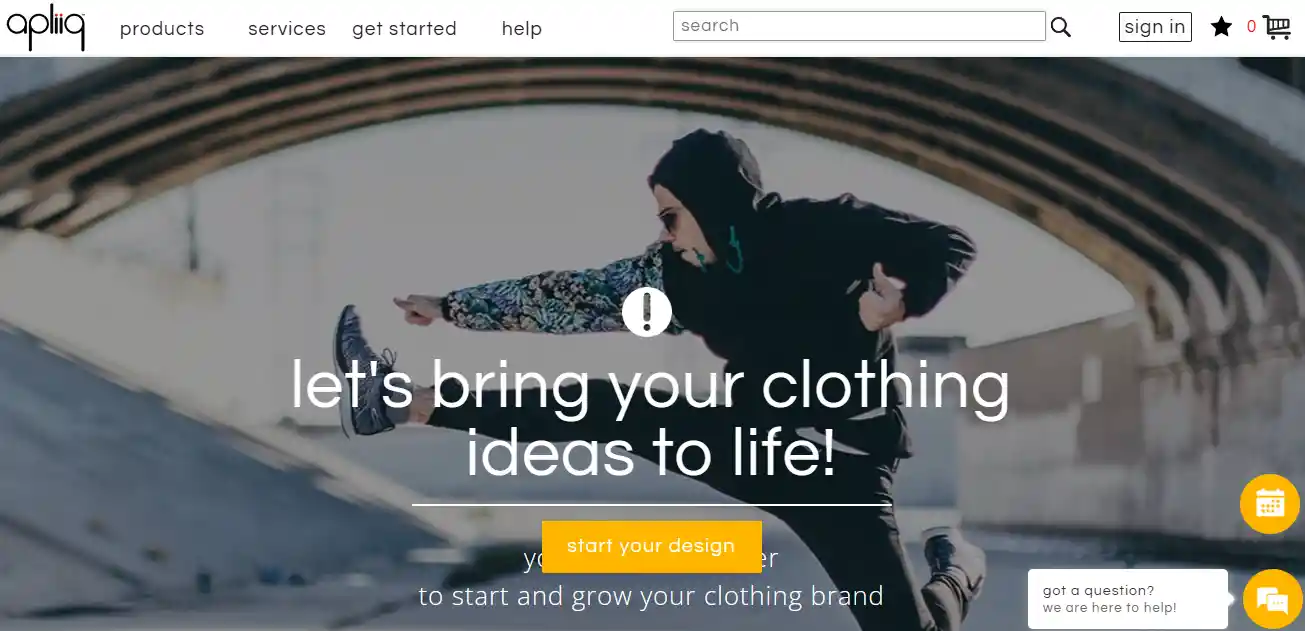
Apliiq offers unique customization options focused on apparel, including labels and fabric applications. If you want to create custom clothing with special branding touches, this platform is worth exploring.
Feature:
- Custom labels and patches
- Wide variety of apparel styles
- Integration with Shopify and Etsy
Pros:
- Strong branding customization
- Good product quality
- Focus on fashion and streetwear
Cons:
- Higher base prices
- Longer production times
Price:
No monthly fees. You pay per product and shipping cost once you get an order.
ShineOn
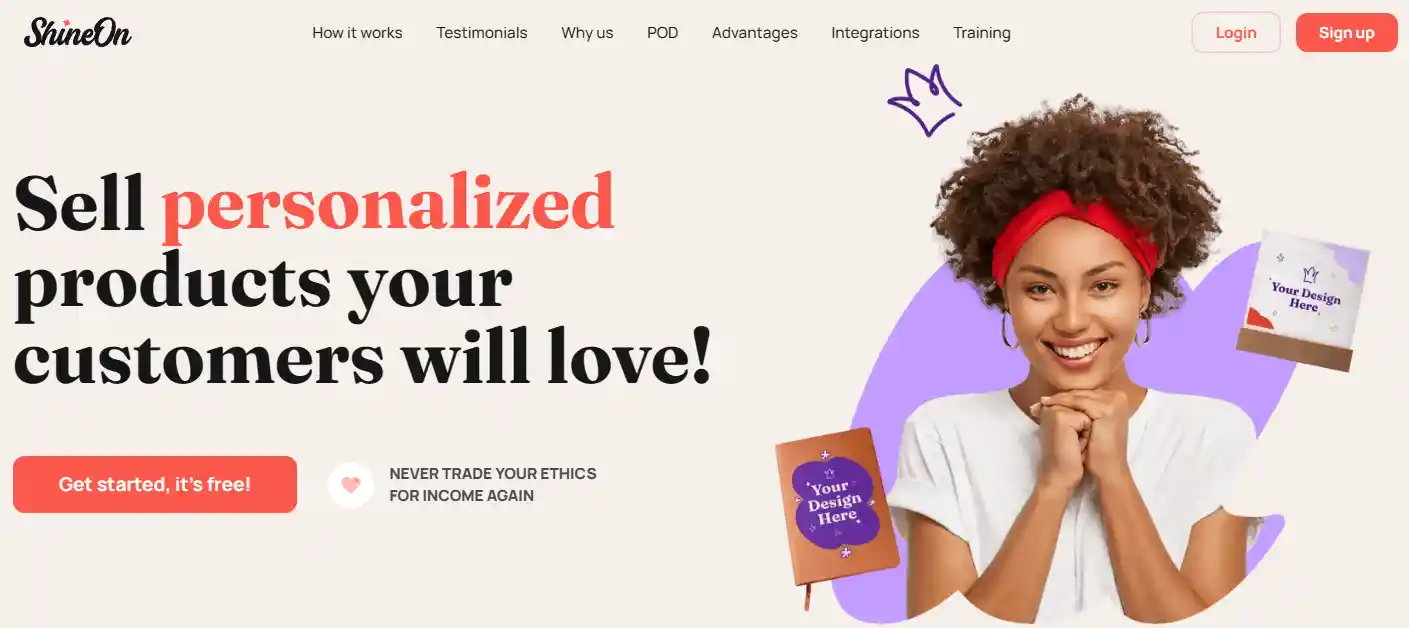
ShineOn specializes in print on demand jewelry, including engraved and personalized items. If your focus is on unique gifts and keepsakes, ShineOn offers a specialized service you might like.
Feature:
- Custom engraved jewelry
- White-label packaging
- Integration with Shopify and Etsy
Pros:
- Unique product niche
- Good branding support
- High-quality craftsmanship
Cons:
- Smaller product range
- Longer production time for some items
Price:
No monthly fees. You pay production and shipping costs as orders come in.
Fourthwall
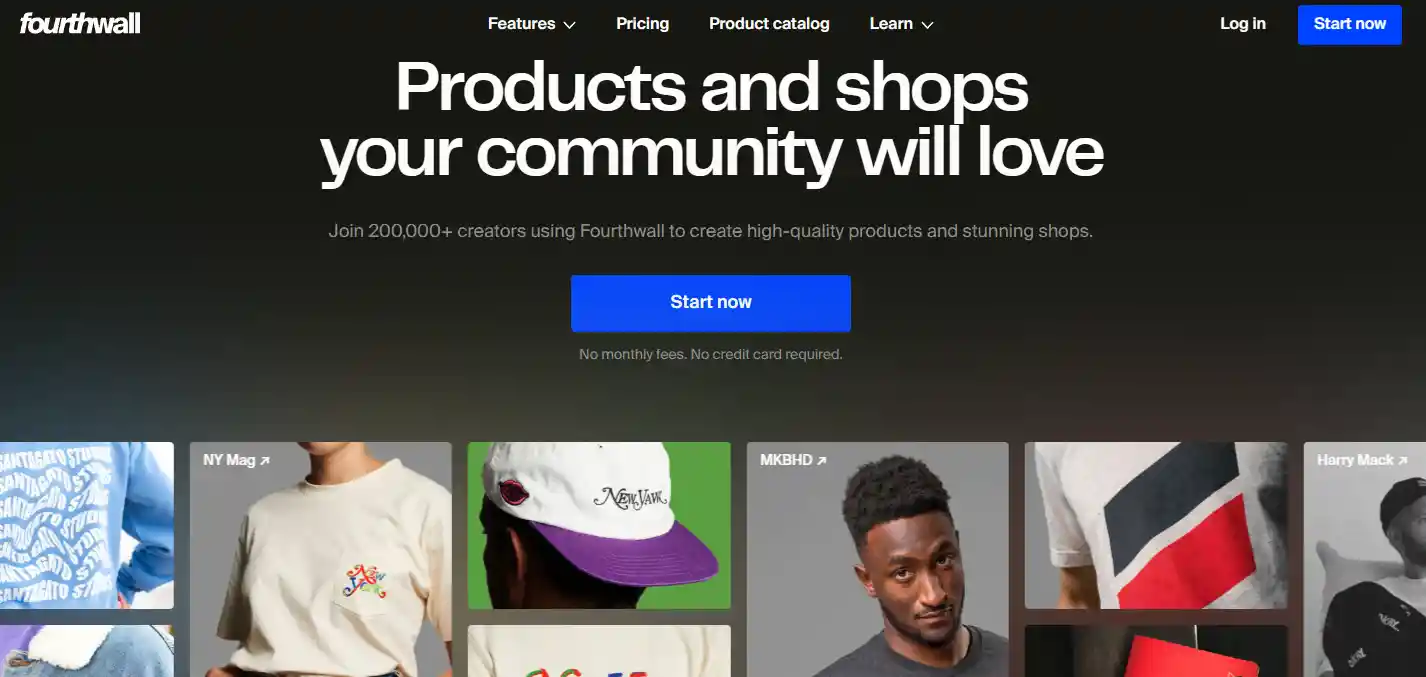
Fourthwall helps creators launch their own merchandise stores with print on demand services. It combines store building tools with fulfillment, so you can focus on selling without technical hassles.
Feature:
- Custom store creation tools
- POD fulfillment included
- Marketing and sales support
Pros:
- Easy to set up and manage
- Tailored for creators
- Integrated marketing features
Cons:
- Monthly subscription required
- Limited product options compared to bigger platforms
Price:
Fourthwall requires a monthly subscription, with fulfillment fees per order added on top.
How to Choose the Best Printify Alternatives for Your Business?
Assess Your Integration Needs
Check if the alternative works with your sales channels. Do you sell through Shopify, Etsy, or WooCommerce? Verify integration capabilities before switching. Seamless connections save hours of manual work.
Compare Costs Carefully
Look beyond base printing prices. Calculate:
- Per-item production fees
- Monthly subscription costs (if any)
- Shipping rates and packaging charges
- Hidden fees for design mockups or storage
Higher upfront costs might mean better quality or faster shipping.
Evaluate Shipping Times & Locations
Where are their production facilities? Production locations determine delivery speed and costs. If most customers are in Europe, choose a supplier with European bases. Check average turnaround times – slow shipping kills reviews.
Match Products to Your Niche
Not all suppliers offer the same items. Need all-over-print swimwear or embroidered hats? Find specialists in your product category. Some excel in apparel, others in home goods or tech accessories.
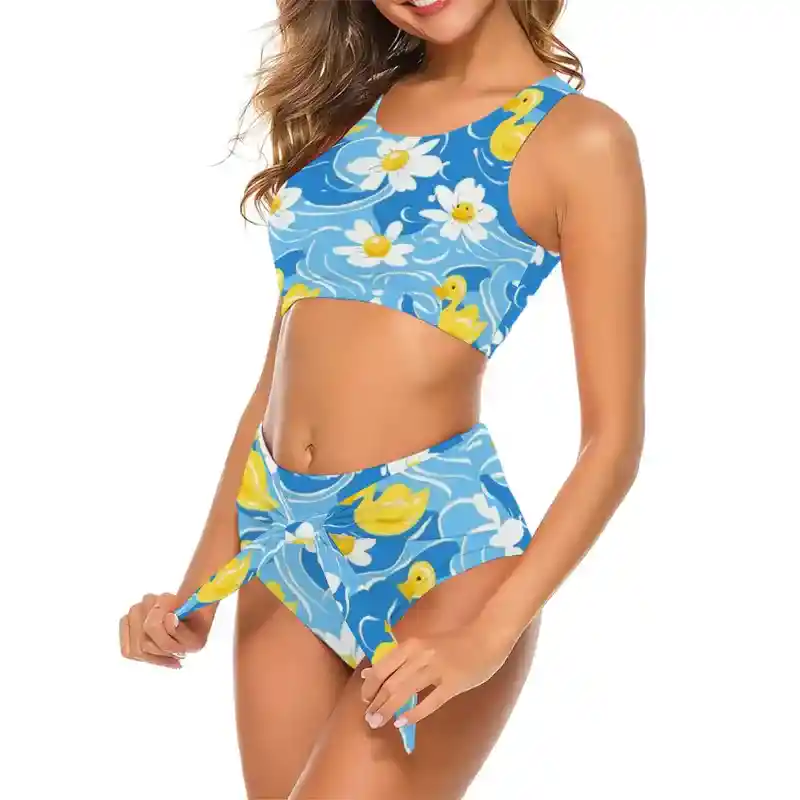
Print On Demand Tie-Detail Two Piece Swimsuit Customized Services - PrintKK
Test Product Quality
Always order samples. Feel the fabric thickness, check print durability, and inspect packaging. What looks good online might disappoint in person. Sample testing prevents customer complaints later.
Read Real User Reviews
Search for complaints about consistency, customer service, or damage claims. One red flag: multiple reviews mentioning late shipments or poor resolution of issues.
Prioritize what matters most to your business – whether it's pricing, speed, or unique products. The right fit differs for every seller.
How to Find Quality Supplier Among Many on Printify
Navigating Printify's network of printers can feel like a puzzle. Since Printify acts as a middleman, connecting you with various local print shops, the quality of your products can vary. Each supplier has its own strengths, and finding the right one takes a bit of effort.
Start by ordering samples. Mockups on Printify's platform always look polished, but the real product might differ. Samples let you see and feel the actual print quality before selling. This step saves you from unhappy customers later.
Here's a simple plan to pick the best supplier:
- Check supplier ratings and reviews on Printify's platform.
- Order samples from at least two or three different printers.
- Compare the product's texture, color accuracy, and packaging.
- Note shipping times and costs for each supplier.
Trial and error is part of the process. Test a few printers to discover which one delivers the best results for your designs. Keep track of what works to build a reliable system.

Why Do Printify Packages Frequently Get Lost? (How to Handle It)
If you're using Printify and feel like too many packages are getting lost, you're not alone. Some sellers report frequent issues, especially with tracking and delivery problems.
But it's important to know that Printify doesn't ship the packages—they work with print providers, who then hand things off to third-party shipping carriers like USPS, DHL, or smaller local companies.
In the U.S., problems usually come from carriers not scanning packages. Sometimes, USPS won't update tracking until a package is already close to delivery. That makes it look like it's lost when it's not.
In other regions like Europe or Asia, print providers may use smaller or local postal services that don't provide reliable tracking at all. This can be frustrating for both you and your customers.
To handle this, you can:
- Check that customer addresses are accurate
- Choose providers with better reviews on delivery
- Use Printify's support to request a free reprint or refund if an item is confirmed lost
It won't fix everything, but it helps manage the stress.
Read More:
- Printify Review: 11 Key Things You Should Know About Printify
- Printify Vs Printful: Which Is Better for Your POD Business
Expert Tips
Running a print-on-demand store takes time and smart choices. If Printify isn't the right fit, you have many strong options. The right platform depends on your goals, location, and product needs.
Exploring Printify alternatives helps you find better shipping, pricing, or branding tools. Some are better for fast delivery. Others give you more control over your store.
Stay flexible. Keep testing what works. What matters most is finding a setup that works for you and your customers.
FAQs
Is print-on-demand profitable?
Yes, when managed well. Focus on products with healthy profit margins (like mugs or premium apparel) and target specific niches. Avoid underpricing – factor in all costs before setting your retail price.
Is Printify 100% free?
Technically yes – no monthly subscriptions. You only pay per order when items sell. However, production, shipping, and potential add-on fees apply. Always review their pricing breakdown before listing products.
Do I have to pay Printify first?
You pay for products and shipping only after a customer orders. Ensure your account balance covers order costs to avoid production delays.
Who pays shipping on Printify?
Customers pay shipping fees at checkout. You set these rates in your store settings. Printify calculates carrier costs based on location and package weight, which you pass to buyers.
What is the cheapest print-on-demand company?
PrintKK is one of the cheapest print-on-demand companies available. It offers low base prices and competitive shipping rates, especially for apparel and everyday items.










 Global Shipping
Global Shipping


 Made in USA
Made in USA



























